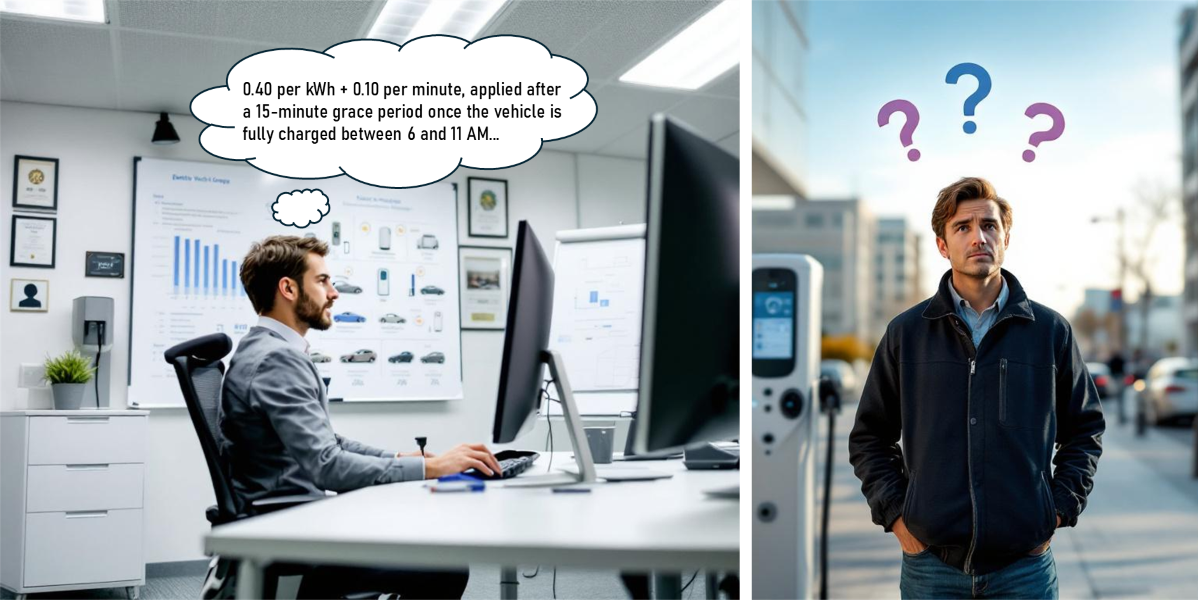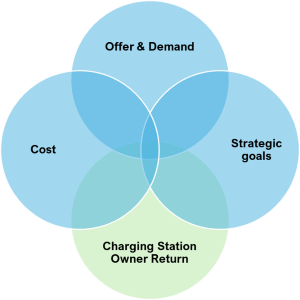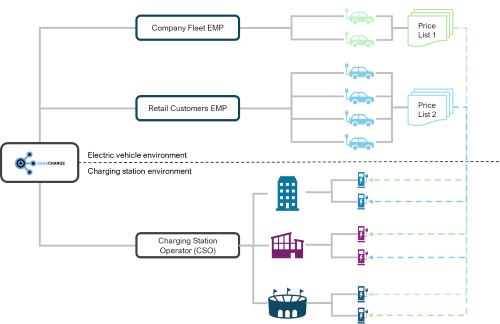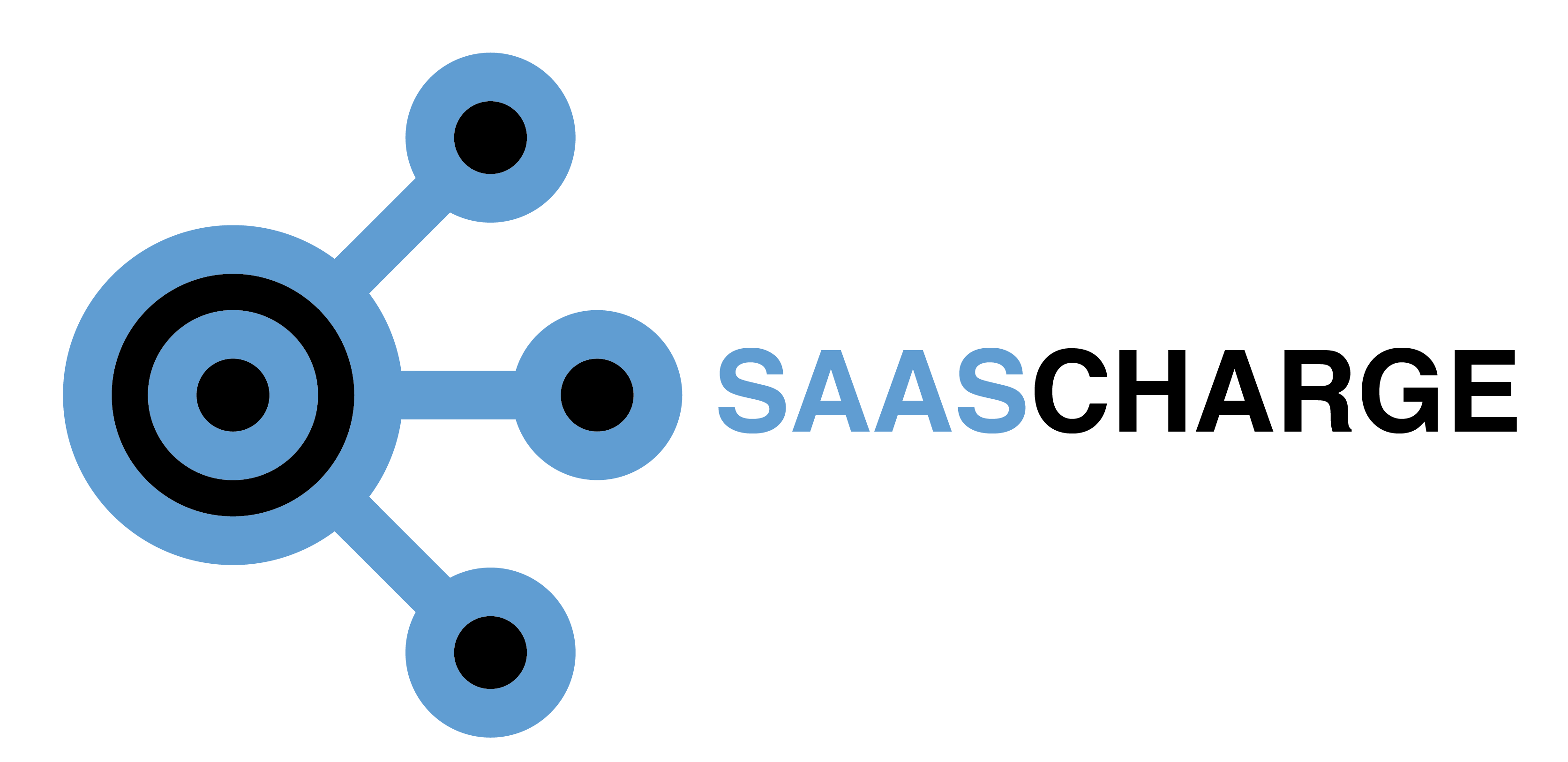
How to Build Value for EV Drivers with Smart Pricing
1. Define Your Pricing Objectives
- Costs: Electricity, including electricity rates, software licensing fees, routine maintenance, customer service, and hardware amortization.
- Offer & Demand: Evaluate the number of available chargers versus the competition and the volume of EV drivers seeking public charging in your area.
- Strategic Goals: Align your pricing strategy with broader company objectives—whether that’s maximizing usage, promoting loyalty, achieving ROI, or supporting sustainability initiatives.
In the EV charging world, we recommend including a fourth pillar: Charging Station Owner Return – The most critical stakeholder whose motivations of profit must be managed carefully.

2. Use the Right pricing parameters
A. Standard-Fix Pricing Parameters
These are the most common and static forms of pricing:
|
Per kWh |
Energy consumed: the core unit for fairness |
| Per Minute | Time-based charging, useful to discourage overstays |
| Per Session | A fixed transaction fee, often applied at session start |
Combining these with minimum charges or prepaid amounts can optimize both profitability and customer experience.
B. Time-dependent Pricing Parameters
These aim to influence charging behaviour over time:
| Time band | Different tariffs for peak/off-peak hours. |
| Idle | Charges per minute begin after a grace period once the battery is full. |
| Timer | Charges per minute begin after a set time, regardless of charging status (e.g., 2 hours max) |
These models promote turnover but must be used carefully in specific locations (e.g., hotels or overnight stays).
C. Dynamic Pricing Parameters
Unlike fixed pricing models, dynamic pricing reflects the real-time cost of energy, which fluctuates based on supply and demand influenced by factors such as grid capacity, renewable energy production (e.g., solar and wind), and consumption patterns. Types of Dynamic Pricing:
| Load-Based Pricing | Pricing varies based on the load capacity used. Higher power output (e.g., 150kW vs. 22kW) may justify a higher rate due to infrastructure demands. |
| Cost-Based Pricing | Prices are calculated using a spot-price model, typically by applying a margin on top of real-time electricity market rates. |
⚡️ EV charging can represent up to one-third of a household’s daily energy use. By 2040, 15–20% of household consumption could come from EVs. This makes smart pricing models essential for balancing demand, energy costs, and grid pressure.
3. Price Application: How to Apply the Prices
While EV drivers see a single final price, the application model—how and where prices are set in your backend—impacts personalisation, competitiveness, and flexibility. You can choose to apply prices at either the charging station level or EV driver level.
EV driver price level – Consumer-oriented
| Pros | Cons |
|
|

Charging Station price level – Operator Oriented
| Pros | Cons |
|
|
Most platforms today default to station-level pricing for simplicity. However, we recommend systems like the Saascharge platform that enable EV driver-level pricing for maximum flexibility and customer engagement.
4. Managing & Monitoring your prices
EV charging prices are only effective when they are actively managed and continuously optimised. A successful pricing strategy requires both internal analysis and external benchmarking on an ongoing basis.
Internal Analysis
This involves analysing your own network’s charging data. Robust reporting and data analysis capabilities are essential to assess:
- Traffic patterns – Daily, weekly, or seasonal usage trends
- Charging behaviour – Duration of sessions, energy consumed
- User behaviour – Time of day, frequency of visits, repeat users
These insights help you fine-tune pricing at the site level and adapt your strategy to driver habits and demand.
External Benchmarking
This involves evaluating how your pricing compares to others in the market. Key areas to monitor include:
- Competitor pricing – What nearby charging providers are charging
- Charger types – Types and power levels offered by competitors
- Market expectations – Regional pricing norms and evolving consumer perceptions
While specialised services can provide competitive pricing intelligence, building an internal process for regular price benchmarking is essential for long-term market positioning and profitability.
Final Thoughts: What’s the “Right” Price?
There is no one-size-fits-all price. The right price:
- Encourages EV drivers to charge at your location
- Maximises return for your business and station hosts
Example:
At a hotel, applying idle fees may deter guests from staying overnight. However, at a busy Super-Fast Charging hub, combining per-kWh pricing with a time limit or idle fee may boost turnover and revenue.
Pricing isn’t just a cost; it’s a strategic tool. Use it to guide behaviour, boost utilisation, and ultimately deliver value to both drivers and infrastructure owners.
Next comes the billing and invoicing phase, where you can unlock further opportunities with discounts, loyalty programs, and promotional offers. We’ll cover that in our next post. Stay tuned and follow Saascharge for more insights.
